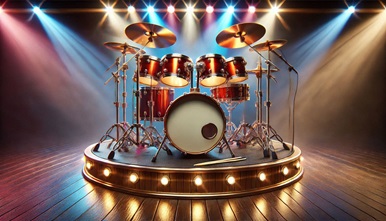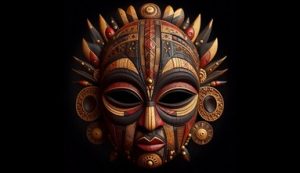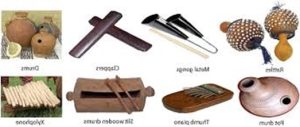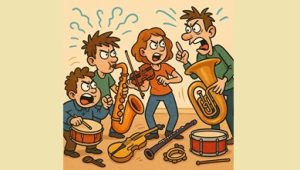Discover the World of Percussion Instruments
Discover the World of Percussion Instruments
Percussion instruments are the largest family in the orchestra and play a crucial role in any musical ensemble
Percussion InstrumentsThese instruments, found in cultures around the globe, come in a variety of shapes, sounds, and functions.
This guide will introduce you to the world of percussion, covering what they are, their history, key examples, and the benefits of playing them.
What Are Percussion Instruments?
Percussion instruments produce sound through striking, shaking, or scraping.
The term “percussion” originates from the Latin word percussionem, meaning “to strike or blow.” Instruments like drums focus on rhythm, while others, such as the xylophone or timpani, can produce melodic notes.
Types of Percussion Instruments
Percussion instruments can be broadly categorized as tuned or untuned.
- Tuned instruments: These produce specific pitches, such as the xylophone or timpani.
- Untuned instruments: These create rhythmic sounds without a definite pitch, such as bass drums or cymbals.
Some common percussion instruments include:
- Timpani: Also called kettledrums, they are tuned instruments with adjustable pitches.
- Xylophone: Features wooden bars that produce bright, melodic tones when struck.
- Cymbals: metal disks that create dramatic crashes or subtle textures.
- Maracas: rattles filled with beads, originating from Latin America.
- Drums: Snare drums, bass drums, and others provide rhythm and dynamic accents.
- Piano: Often considered both a string and percussion instrument, the piano produces sound through hammers striking strings.
The History of Percussion Instruments
Percussion instruments date back over 5,000 years, with early examples found in Mesopotamia, Egypt, and China. They have since evolved into unique forms across different cultures:
- The djembe is from Africa.
- The tabla is from India.
- Japan taiko drums
Over centuries, trade and migration facilitated the blending of musical traditions, leading to innovative instruments and techniques.
Modern developments, like electronic drums, have further expanded the role of percussion in contemporary music.
How Do Percussion Instruments Work?
Percussion instruments create sound in various ways:
- Striking: Using hands, sticks, or mallets to hit surfaces (e.g., drums, xylophone).
- Shaking: Producing vibrations by moving the instrument (e.g., maracas, tambourines).
- Scraping: Rubbing surfaces together to generate sound (e.g., guiro).
- Crashing: Bringing two elements together (e.g., cymbals).
Benefits of Playing Percussion Instruments
Playing percussion offers numerous physical, mental, and social benefits.
- Enhanced Coordination: Drumming improves motor skills and ambidexterity.
- Stress Relief: Creating music can be a therapeutic and calming activity.
- Self-Expression: Percussion allows musicians to convey emotions through rhythm.
- Social Connection: Playing in groups fosters teamwork and collaboration.
- Cognitive Development: Learning percussion enhances memory, focus, and creativity.
Notable Percussion Instruments
Here are some standout instruments in the percussion family:
- Piano: Combines melodic range and rhythmic capabilities.
- Timpani: Essential in orchestras for their deep, resonant tones.
- Xylophone: A versatile, melodic instrument with wooden bars.
- Cymbals: Known for their dramatic and impactful sound.
- Drums: The heartbeat of any ensemble, keeping rhythm and energy.
- Maracas: Vibrant and rhythmic, ideal for lively musical styles.
- Gong: A dramatic, resonant metal instrument often used for emphasis.
- Chimes: producing bell-like tones, they add elegance to compositions.
Fun Facts about Percussion Instruments
- Percussion instruments are among the oldest musical instruments in human history.
- They play a central role in cultural traditions worldwide, from African drum circles to Asian ceremonial music.
- Innovations like drum machines have transformed modern music production.

Closing Thoughts
The world of percussion instruments is rich and diverse, offering something for everyone.
Whether you’re drawn to the rhythmic pulse of drums, the melodic charm of the xylophone, or the dynamic crashes of cymbals, percussion instruments bring vibrancy and texture to music.
Why not explore these instruments and see where your musical journey takes you?
Whether you’re a beginner or a seasoned musician, percussion is an exciting avenue to express creativity and connect with music’s universal rhythm.






Thanks for sharing. I read many of your blog posts, cool, your blog is very good.
Your article helped me a lot, is there any more related content? Thanks!